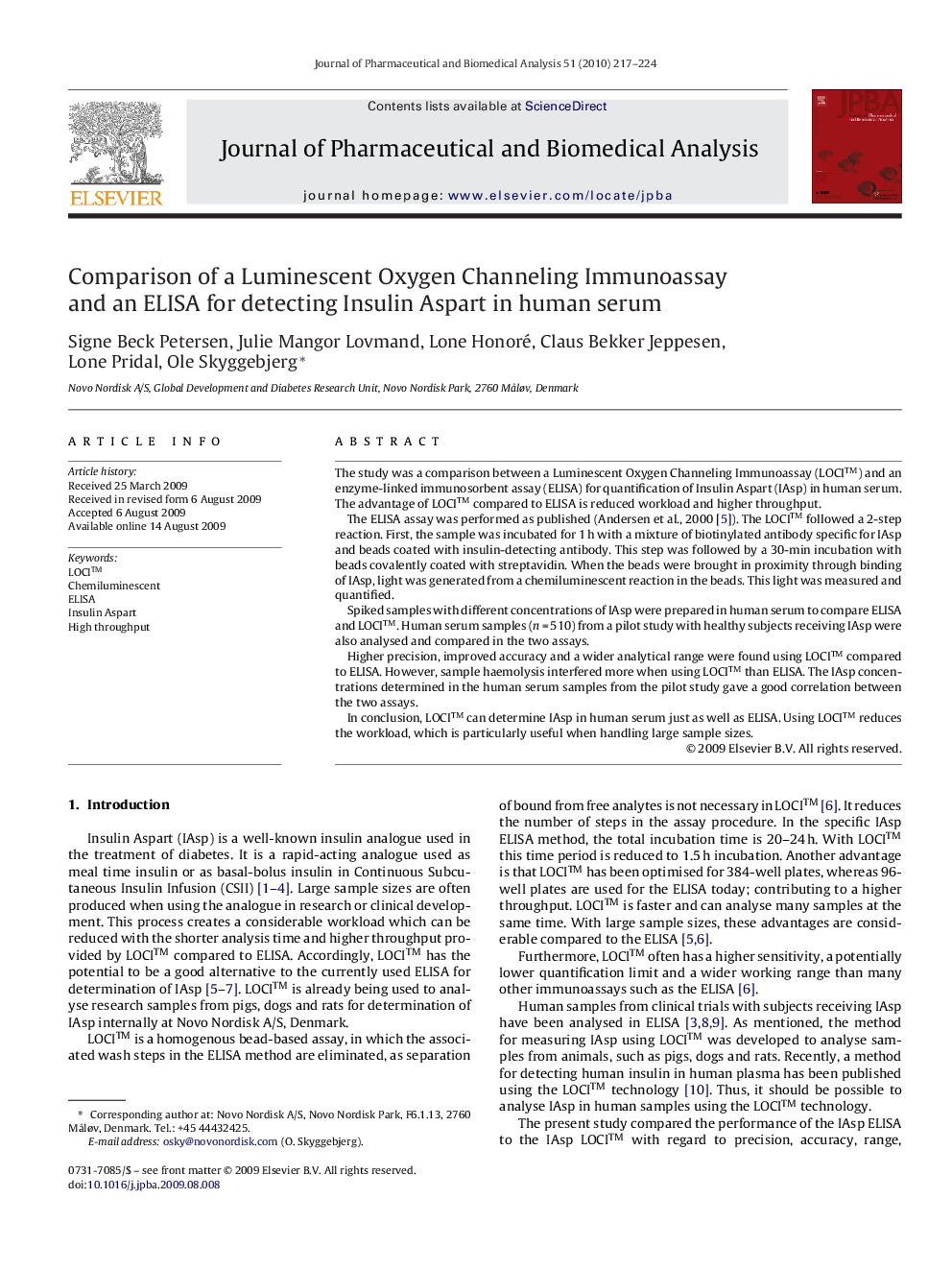| کد مقاله | کد نشریه | سال انتشار | مقاله انگلیسی | نسخه تمام متن |
|---|---|---|---|---|
| 1223564 | 967894 | 2010 | 8 صفحه PDF | دانلود رایگان |

The study was a comparison between a Luminescent Oxygen Channeling Immunoassay (LOCI™) and an enzyme-linked immunosorbent assay (ELISA) for quantification of Insulin Aspart (IAsp) in human serum. The advantage of LOCI™ compared to ELISA is reduced workload and higher throughput.The ELISA assay was performed as published (Andersen et al., 2000 [5]). The LOCI™ followed a 2-step reaction. First, the sample was incubated for 1 h with a mixture of biotinylated antibody specific for IAsp and beads coated with insulin-detecting antibody. This step was followed by a 30-min incubation with beads covalently coated with streptavidin. When the beads were brought in proximity through binding of IAsp, light was generated from a chemiluminescent reaction in the beads. This light was measured and quantified.Spiked samples with different concentrations of IAsp were prepared in human serum to compare ELISA and LOCI™. Human serum samples (n = 510) from a pilot study with healthy subjects receiving IAsp were also analysed and compared in the two assays.Higher precision, improved accuracy and a wider analytical range were found using LOCI™ compared to ELISA. However, sample haemolysis interfered more when using LOCI™ than ELISA. The IAsp concentrations determined in the human serum samples from the pilot study gave a good correlation between the two assays.In conclusion, LOCI™ can determine IAsp in human serum just as well as ELISA. Using LOCI™ reduces the workload, which is particularly useful when handling large sample sizes.
Journal: Journal of Pharmaceutical and Biomedical Analysis - Volume 51, Issue 1, 5 January 2010, Pages 217–224